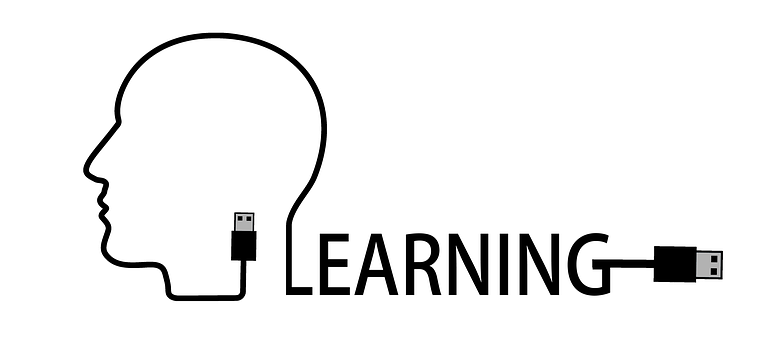
y John Myers
As a result of “playing with” technology based on a model for investigation (FAB +D), a rough standard for judging effectiveness, and the experiences of 200+ TCs (grades 4-12) teaching in 200+ schools in the GTA and surrounding areas we have a sense of what is happening and why.
The work was done between 2011-17. As you read further is this perspective outdated or are the issues the same?
- The FAB+D formula is clear to student teachers and anyone else, perhaps including senior high students, wishing to assess the quality of any innovation.
- Our rough standard tied in the question of quality seemed also to be clear; namely
Did the use of technology promote an environment for learning through
- setting objectives and providing feedback,
- reinforcing effort and providing recognition, or
- cooperative learning?
Did the use of technology help students develop understanding through
- cues, questions, and advance organizers,
- nonlinguistic representations,
- summarizing and note taking, or
- assigning homework and providing practice?
Did the use of technology help students extend and apply their knowledge (both declarative: knowing that . . . aka “content” and procedural: knowing how to… aka “skills) through
- identifying similarities and differences or
- generalizing and testing hypotheses? (Dean et al, 2012)
- Schools and school districts both encourage yet constrain the impact of technology through issues of hardware, software, school /district policy and the resources in the wider communities served.
- A majority of my TCs and their ATs welcomed and embreaced the use of ICT (internet communications technology) and additional TCs became more favourable through their B Ed /MT years. Some remained uncomfortable. A few were skeptical and stayed that way— self-confessed “luddites”. Most saw tech as a “two-edged sworf” and not a magic bullet. As Michael Fullan said recently, “A fool with a tool is still a fool” (Fullan, 2014).
- The number of Apps seems to have grown exponentially and their exploration over the years resulted in hundreds of pages of data in the form of teacher and student experience. It is also clear that Google and its various manifestations have assumed a dominant position in school districts around the GTA.
- As noted in an earlier Perspective column on three years of teaching a course on assessment, the use of technology as an assessment tool was (surprisingly to me) not a major topic of research by my students based on their first year of practicum supervisions or course work at OISE.
- The issue of classroom distractions was noted but not extensively explored though when I talk to graduates who now teach full time, it is often a major issue. I noted it even 20 years ago teaching about tech in my Honour Specialist History course. Perhaps student teachers have too much on their plate in a four week practicum to see it as a huge issue at the time, though they reflect on it later to me.
In 2010 I worked with a group of middle school students in New York State looking at emerging issues in technology. Even then they were most concerned about cyberbullying yet when they surveyed a hundred teachers and school administraters, the adults had to be prompted to recognize the issue as it did not jump to mind. To what exent I wonder has this changed? I do not know.
My own interest, as noted in the first part of this series has spanned nearly 4 decades. As I leave the formal world of teacher education, I offer my conclusions and wishes. History teaching and learning to think intelligebly about the past are more than blessed with the array of online resources for any course and any lesson. I am comfortable with how we approach the study and investigation the the impact of ICT in schools, at least within my curriculum area. Such principles as Design Down, Know Thy Impact (Hattie, 2012) are guides to my learning and teaching with or without tech.
One area that we neither explored nor was it raised anywhere was the phenomena of the “flipped classroom” a current flavor-du jour in some American jurisdictions. It is a form of blended learning in which students learn new content online by watching video lectures, usually at home as homework. Giving students homework in the form of application exercises and assigned problems is now done in class with teachers offering more personalized guidance and interaction with students, instead of lecturing. (definition adapted from Wikipedia). Some small studies have suggested this slightly superior to the traditional way of assigning homework in that more students may actually do the work. Early in my teaching of social science I could get my high schoolers and my grade sixes to watch TV shows (their choice) to find examples of and applications for concepts and issues we were exploring in class. This helped me resist the temptation to brush the idea of the flipped classroom as another silly idea. I also recognized that I have done some of this through my use of the Pepper class networking system at OISE.
Under what circumstances, if any, is the flipped classroom a model worth pursuing in any class?
Could this further diversification and exploration be worth sharing among teachers in a convenient way through a blog or Facebook? Rapport has increasingly served as a useful forum for sharing ideas. I trust this to continue.
References
Dean, C.B., Ross Hubble, E., Pitler, H, and Stone, B. (2012). Classroom Instruction that Works: Research –Based Strategies for Increasing Student Achievement, 2nd edition. Alexandria VA & Denver CO: ASCD & McREL.
Fullan, M. (2014). How the Use of Technology in the Classroom can transform instruction. Keynote Presentation at the CONNECT 2014 Conference, Niagara Falls, May 8.
Hattie, J. (2012). Visible Learning for Teachers: Maximizing Impact on Learning. New York: Routledge.


